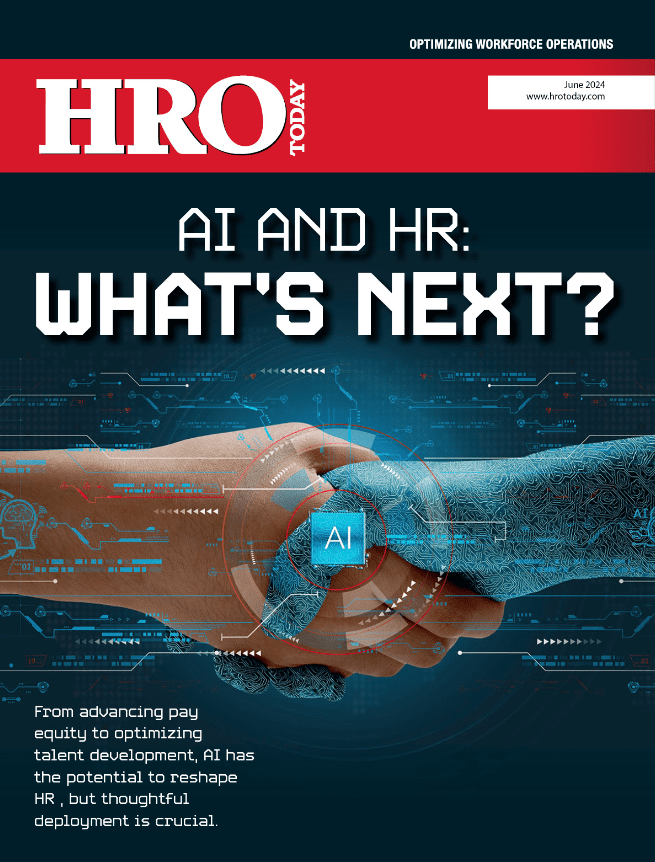A Fortune 10 Healthcare leader hit steep hiring and business goals by leveraging integrated data to make informed decisions.
By Zee Johnson
Prior to 2020, many companies had already committed to improving how they used data to inform business and workforce decisions. But that memorable year further solidified the importance of having predictive analytics, as businesses relied on them to meet acquisition needs in a peculiar talent market. According to McKinsey, the pandemic accelerated digital adoption by seven years and essentially, data became a deciding factor in many businesses’ survival or demise.
One organization facing obstacles that could not be solved with traditional methods was a major Fortune 10 Healthcare company. At the recent HRO Today People in Healthcare Summit, industry expert Jeff Lackey, founder of JKL Advisors and former head of talent acquisition for multiple major global companies, spoke about the role of solid intelligence in guiding the talent function. Specifically, he reflected on the tasks he faced in successfully leading that healthcare company through the challenges of the pandemic. During the 2020-2021 timeframe, he faced some of the most significant responsibilities of his career — hiring 50,000 people in 30 days and building a workforce that could rise to the demand of administering COVID-19 tests and also deliver vaccinations, all at a scale to reach tens of millions of people across the US.
 To achieve these monumental tasks, Lackey needed to leverage accurate data to determine the right strategy to find, attract, and retain the talent that was needed during a time of crisis. Enter Sevenstep’s Sevayo® Insights, a proprietary data aggregator that centralizes talent acquisition (TA) data to provide synthesized reporting, versatile benchmarking, predictive tracking, incisive diagnostics, and prescriptive solutions.
To achieve these monumental tasks, Lackey needed to leverage accurate data to determine the right strategy to find, attract, and retain the talent that was needed during a time of crisis. Enter Sevenstep’s Sevayo® Insights, a proprietary data aggregator that centralizes talent acquisition (TA) data to provide synthesized reporting, versatile benchmarking, predictive tracking, incisive diagnostics, and prescriptive solutions.
“Most organizations have a great amount of data, but the real challenge is that it is not integrated and therefore unusable,” explains Noelle Paras, Vice President of Client Services for Sevenstep.
Lackey agrees, saying that without a unifying technology to inform operations, a large and complex talent function resembles a “70-piece orchestra without a conductor figuring out how to play.” But with the technology in place, an organization can integrate data from multiple streams like its applicant tracking system (ATS), human resources information system (HRIS), and even social sites like LinkedIn and Facebook. As a result, the organization can understand what is working, what is not, and what changes could make a difference. This technology was the foundation of a talent ecosystem, enabling talent acquisition teams to be proactive instead of reactive in their decision-making.
Sevayo Insights was applied as part of Sevenstep’s RPO engagement with the healthcare company, drawing data from across multiple client systems and leveraging a relationship that goes back twelve years. And the results didn’t just diagnose what had already happened. They also determined what was to come, up to three weeks in advance. “These insights answered the questions before they were asked,” Lackey says.
Data “blind spots” that inhibited the company from being informed were also removed, allowing Lackey to make decisions confidently on a moment-by-moment basis. This unified database made the healthcare enterprise more empowered than ever before.
“By getting visibility to your entire talent ecosystem, you gain agility, become highly responsive, and can take action to support diversity by identifying where we need to become more equitable,” says Paras.
For example, the organization achieved clarity around three critical areas.
- Talent supply: the talent function could pinpoint all talent types aligned to specific roles and qualifications, including permanent, contract, and by geography.
- Resource supply: this empowers the TA team to flex and scale quickly through capacity planning, leveraging what is needed (RPO recruiters, internal team, contractor staffing) at the time.
- Process performance: measuring success and addressing issues was possible with accurate and current data around metrics, including time to fill, efficiency, quality, retention, satisfaction and, importantly, candidate feedback.
To thrive in today’s tight talent market, Lackey says it is critical to be proactive and maintain a clear understanding of your current talent needs through data. This can be achieved with a few best practices.
- Take inventory of all inputs/feeds and aggregation.
- Seek objective support to ascertain what steps to take.
- Use that information to further support the talent ecosystem.
By late 2021 and into 2022, the effort proved successful. The organization is now positioned to weather the shifts in the workforce and rapidly evolving demands that are now part of the healthcare landscape. The hardship led to improvement, and the improved use of predictive analytics was instrumental in moving the TA function forward.














